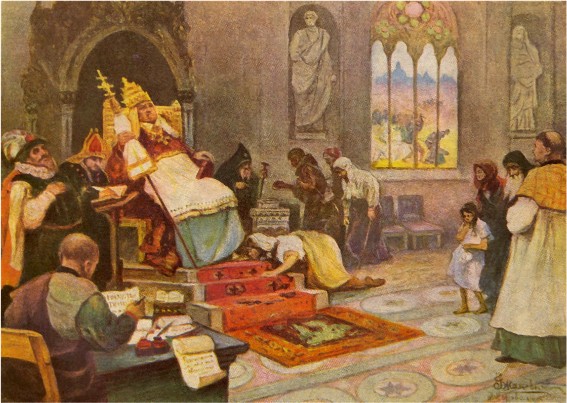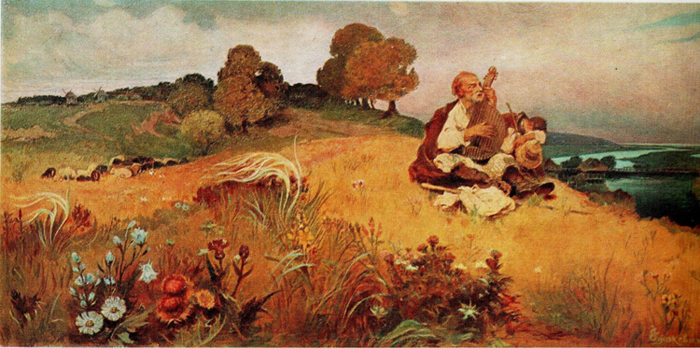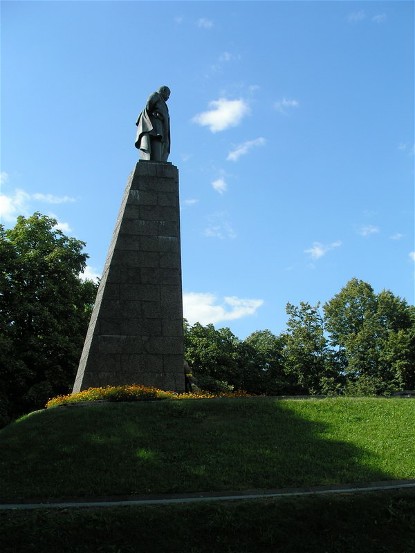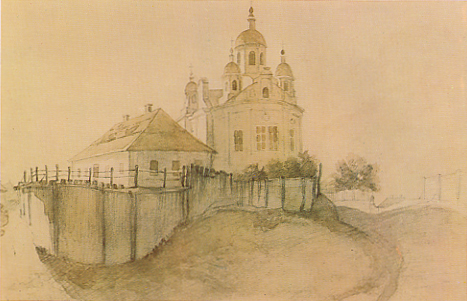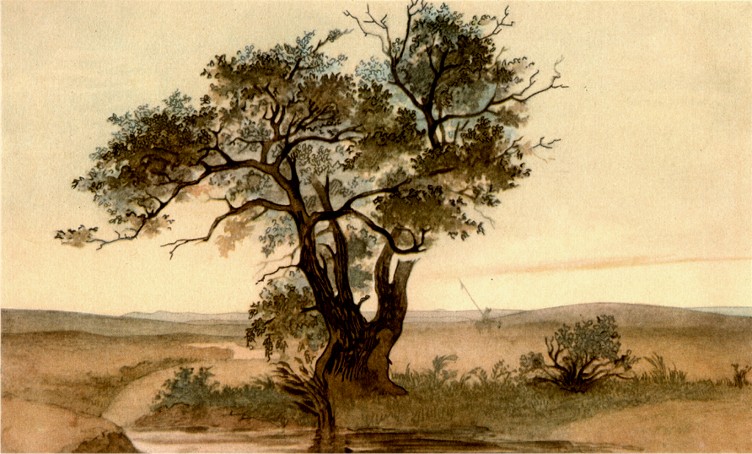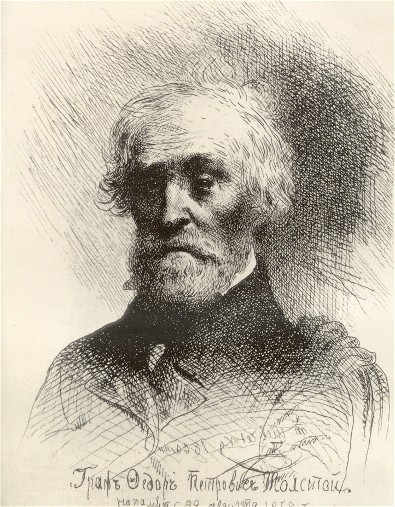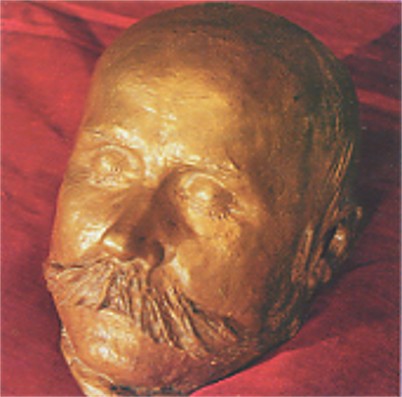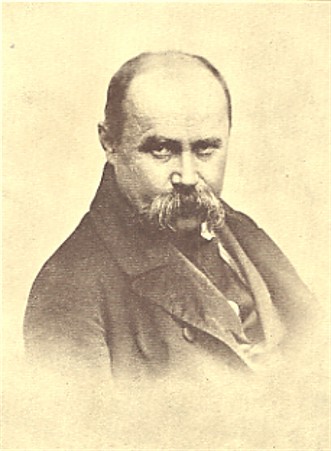Shevchenko, Taras
Shevchenko, Taras [Ševčenko], b 9 March 1814 in Moryntsi, Zvenyhorodka county, Kyiv gubernia, d 10 March 1861 in Saint Petersburg, Russia. Ukraine’s national bard and famous artist. Born a serf, Shevchenko was orphaned when he was twelve and grew up in poverty and misery. He was taught to read by a village precentor and was often beaten for ‘wasting time’ on drawing. At the age of 14 he became a houseboy of his owner, P. Engelhardt, and served him in Vilnius (1828–31) and then Saint Petersburg. Engelhardt noticed Shevchenko's artistic talent, and in Saint Petersburg he apprenticed him to the painter V. Shiriaev for four years. Shevchenko spent his free time sketching the statues in the capital’s imperial summer gardens. There he met the Ukrainian artist Ivan Soshenko, who introduced him to other compatriots, such as Yevhen Hrebinka and Vasyl Hryhorovych, and to the Russian painter A. Venetsianov. Through these men Shevchenko also met the famous painter and professor Karl Briullov, who donated his portrait of the Russian poet Vasilii Zhukovsky as the prize in a lottery whose proceeds were used to buy Shevchenko's freedom on 5 May 1838.
Soon after, Shevchenko enrolled in the Imperial Academy of Arts in Saint Petersburg and studied there under Briullov’s supervision. In 1840 his first poetry collection, Kobzar, consisting of eight Romantic poems, was published in Saint Petersburg. It was followed by his epic poem Haidamaky (The Haidamakas, 1841) and the ballad Hamaliia (1844). While living in Saint Petersburg, Shevchenko made three trips to Ukraine, in 1843, 1845, and 1846, which had a profound impact on him. There he visited his still enserfed siblings and other relatives, met with prominent Ukrainian writers and intellectuals (eg, Hrebinka, Panteleimon Kulish, and Mykhailo Maksymovych), and was befriended by the princely Repnin family (especially Varvara Repnina). Distressed by the tsarist oppression and destruction of Ukraine, Shevchenko decided to capture some of his homeland’s historical ruins and cultural monuments in an album of etchings, which he called Zhivopisnaia Ukraina (Picturesque Ukraine, 1844).
After graduating from the academy of arts in 1845, Shevchenko became a member of the Kyiv Archeographic Commission and traveled widely through Russian-ruled Ukraine in 1845 to sketch historical and architectural monuments and collect folkloric and other ethnographic materials. In 1844 and 1845, mostly while he was in Ukraine, he wrote some of his most satirical and politically subversive narrative poems, including ‘Son’ (A Dream), ‘Sova’ (the Owl), ‘Kholodnyi Iar,’ ‘Ieretyk’/ ‘Ivan Hus’ (The Heretic/Jan Hus),‘Slipyi’ (The Blind Man), ‘Velykyi l'okh’ (The Great Vault), and ‘Kavkaz’ (The Caucasus). He transcribed them and his other poems of 1843–45 into an album he titled ‘Try lita’ (Three Years).
While in Kyiv in 1846, Shevchenko joined the secret Cyril and Methodius Brotherhood. Like the other members of the brotherhood, he was arrested, on 5 April 1847. The authorities’ confiscation and discovery of his anti-tsarist satirical poems in the ‘Try lita’ album brought Shevchenko a particularly severe punishment—military service as a private in the Orenburg Special Corps in a remote region by the Caspian Sea. Tsar Nicholas I himself ordered that Shevchenko be forbidden to write, draw, and paint while in military exile. While serving at the Orenburg and Orsk fortresses, however, Shevchenko managed to continue doing so. He hid his secretly written poems in several handmade ‘bootleg booklets’ (1847, 1848, 1849, 1850). Many of the drawings and paintings he made while in exile depict the life of the indigenous Kazakhs. Owing to Shevchenko’s skill as a painter, he was included in a military expedition to survey and describe the Aral Sea (1848–9).
In 1850 Shevchenko was transferred to the Novopetrovskoe fortress (now Fort Shevchenko in Kazakhstan), where the terms of his captivity were more harshly enforced. Nevertheless, he managed to create over a hundred watercolor and pencil drawings and write several novellas in Russian. Finally released from military exile in 1857, two years after Nicholas I’s death, Shevchenko was not allowed to live in Ukraine. After spending half a year in Nizhnii Novgorod, he moved to Saint Petersburg. He was allowed to visit relatives and friends Ukraine in 1859, but there he was detained and interrogated and sent back to Saint Petersburg. Shevchenko remained under police surveillance until his death. He was buried in Saint Petersburg, but two months later, in accordance with his wishes, his remains were transported to Ukraine and reburied on Chernecha Hora (Monk’s Mountain) near Kaniv. Since that time, his grave has been a ‘holy’ place of visitation by millions of Ukrainians. Today it is part of the Kaniv Museum-Preserve (est 1925).
Shevchenko has had a unique place in Ukrainian cultural history and in world literature. Through his writings he laid the foundations for the creation of a fully functional modern Ukrainian literature. His poetry contributed greatly to the growth of Ukrainian national consciousness, and his influence on various facets of Ukrainian intellectual, literary, and national life is still felt to this day.
Shevchenko's literary oeuvre consists of one mid-sized collection of poetry (Kobzar); the drama Nazar Stodolia and two play fragments; nine novellas, a diary, and an autobiography written in Russian; four articles; and over 250 letters. Already during his first period of literary activity (1837–43), he wrote highly sophisticated poetic works. He adapted the style and versification of Ukrainian folk songs to produce remarkably original poems with a complex and shifting metric structure, assonance and internal rhyme, masterfully applied caesuras and enjambments, and sophisticated alliterations grafted onto a 4 + 4 + 6 syllable unit derived from the kolomyika song structure. He also abandoned use of the regular strophe. Innovations can also be found in Shevchenko's use of epithets, similes, metaphors, symbols, and personifications. A man of his time, his worldview was influenced by Romanticism. But Shevchenko managed to find his own manner of poetic expression, which encompassed themes and ideas germane to Ukraine and his personal vision of its past and future.
Shevchenko’s early works include the ballads ‘Prychynna’ (The Bewitched Woman, 1837), ‘Topolia’ (The Poplar, 1839), and ‘Utoplena’ (The Drowned Maiden, 1841). Their affinity with Ukrainian folk ballads is evident in their plots and supernatural motifs. Of special note is Shevchenko’s early ballad ‘Kateryna’ (1838), dedicated to Vasilii Zhukovsky in memory of the purchase of Shevchenko's freedom (see also his painting Kateryna, which is based on the same poem). In it he tells the tale of a Ukrainian girl seduced by a Russian soldier and abandoned with child—a symbol of the tsarist imposition of serfdom in Ukraine. Some of his other poems also treat the theme of the seduced woman and abandoned mother—‘Vid'ma’ (The Witch, 1847], ‘Maryna’ (1848), and the ballads ‘Lileia’ (The Lily, 1846) and ‘Rusalka’ (The Mermaid, 1846). The oblique reference to Ukraine's history and fate in ‘Kateryna’ is also echoed in other early poems, such as ‘Tarasova nich’ (Taras's Night, 1838), ‘Ivan Pidkova’ (1839), Haidamaky (1841), and Hamaliia (1844). Cossack raids against the Turks are recalled in ‘Ivan Pidkova’ and Hamaliia; ‘Tarasova nich’ and, especially, Haidamaky draw on the struggle against Polish oppression. Shevchenko wrote the Romantic drama Nazar Stodolia (1843–44) toward the end of his early period of creativity. Its action takes place near Chyhyryn, the 17th-century capital of the Cossack Hetmanate.
Although Shevchenko's early poetic achievements were evident to his contemporaries, it was not until his second period (1843–5) that through his poetry he gained the stature of a national bard. Having spent eight months in Ukraine at that time, Shevchenko realized the full extent of his country's misfortune under tsarist rule and his own role as that of a spokesperson for his nation's aspirations through his poetry. He wrote the poems ‘Rozryta mohyla’ (The Ransacked Grave, 1843), ‘Chyhyryne, Chyhyryne’ (O Chyhyryn, Chyhyryn, 1844), and ‘Son’ (A Dream, 1844) in reaction to what he saw in Ukraine. In ‘Son’ he portrayed with bitter sarcasm the arbitrary lawlessness of tsarist rule. Shevchenko’s talent for satire is also apparent in his 1845 poems ‘Velykyi l'okh,’ ‘Kavkaz,’ ‘Kholodnyi Iar,’ and ‘I mertvym, i zhyvym …’ (To the Dead and the Living.). ‘Velykyi l'okh, ’a ‘mystery’ in three parts, is an allegory that summarizes Ukraine's passage from freedom to captivity. In ‘Kavkaz’ Shevchenko universalizes Ukraine's fate by turning to the myth of Prometheus, the free spirit terribly punished for rebelling against the gods, yet eternally reborn. He localizes the action in the Caucasus, whose inhabitants suffered a fate similar to that of the Ukrainians under tsarism. In his poetic epistle ‘I mertvym, i zhyvym …’ Shevchenko turns his bitterness and satire against the Ukrainians themselves, reminding them that only in ‘one's own house’ is there ‘one's own truth’ and entreating them to realize their national potential, stop serving foreign masters, and become honorable people worthy of their history and heritage, in their own free land.
Similarly, in his poem ‘Try lita’ (1845), which has also been used as the name of the second period of Shevchenko’s poetic creativity and the body of work he wrote at that time, he presents his own ‘awakening’ to the shame around him. Shevchenko laments his lost innocence and scorns the coming new year ‘swaddled’ in one more ukase. His scorn for the inactivity of his compatriots is also echoed in the poem ‘Mynaiut' dni, mynaiut' nochi’ (Days Pass, Nights Pass, 1845), in which somnolent inactivity is seen as far worse than death in chains. In December 1845 Shevchenko composed a cycle of poems titled ‘Davydovi psalmy’ (David’s Psalms). He chose the psalms that had a meaning for him (1, 12, 43, 52, 53, 81, 93, 132, 136, 149) and imbued those biblical texts with contemporary political relevance. He ends his ‘Try lita’ album with his famous ‘Zapovit’ (Testament, 1845), a poem that has been translated into more than 60 languages. After being set to music by H. Hladky in the 1870s, the poem achieved a status second only to Ukraine’s national anthem and firmly established Shevchenko as Ukraine’s national bard.
Shevchenko’s historical poem ‘Ivan Hus,’ aka ‘Ieretyk’ ( 1845), introduced another of Shevchenko's major themes. Dedicated to Pavel Šafařík, it depicts the trial and burning of Jan Hus in Konstanz in 1415 to promote the Pan-Slavism of the Cyril and Methodius Brotherhood.
Shevchenko wrote his poetic cycle ‘V kazemati’ (In the Casemate) in the spring of 1847 during his arrest and interrogation in Saint Petersburg. It marks the beginning of the most difficult, late period of his life (1847–57). The 13 poems of the cycle contain reminiscences (the famous lyrical poem ‘Sadok vyshnevyi kolo khaty’ [The Cherry Orchard by the House]); reflections on the fate of the poet and his fellow members of the Cyril and Methodius Brotherhood; and poignant reassertions of his beliefs and his commitment to Ukraine. Shevchenko's stand was unequivocal, and he exhorted his fellow Cyrillo-Methodians and all of his compatriots to ‘Love your Ukraine / Love her … in the harshest time / In the very last harsh minute / Pray to God for her.’ Throughout his exile, Shevchenko's views did not change. But his poems grew more contemplative and reflective. In his ‘bootleg booklets’ he continued writing autobiographical, lyrical, narrative, historical, political, religious, and philosophical poems. Of special interest is his long poem ‘Moskaleva krynytsia’ (The Soldier's Well, 1847, 2d variant 1857), which reveals Shevchenko's preoccupation with the themes of inhumanity and the capacity to accept and forgive. A comparison of its two variants provides an insight into Shevchenko’s maturation as a poet and thinker.
Shevchenko’s autobiographical poems include such lyrical works as ‘Meni trynadtsiatyi mynalo’ (I Was Turning Thirteen, 1847), ‘A. O. Kozachkovs'komu’ (For A. O. Kozachkovsky, 1847), ‘I vyris ia na chuzhyni’ (And I Grew Up in Foreign Parts, 1848), ‘Khiba samomu napysat'’ (Unless I Write Myself, 1849), ‘I zolotoï i dorohoï’ (Both Golden and Dear, 1849), and ‘Lichu v nevoli dni i nochi’ (I Count Both Days and Nights in Captivity, 1850, 2d variant 1858). But personal reflection also occurs in some of his ‘landscape’ poems, especially where Shevchenko describes the paysage of his captivity—eg, ‘Sontse zakhodyt', hory chorniiut'’ (The Sun Is Setting, the Hills Turn Dark, 1847) and ‘I nebo nevmyte, i zaspani khvyli’(The Sky Is Unwashed, and the Waves Are Drowsy, 1848). Varied and rich are the poems devoted to narratives and description motivated by his memories of peasant life. Shevchenko uses folk-song elements to depict sadness, parting, loneliness, folkways, motherhood, women’s harsh fate, and the longing for happiness. His poetic style is marked by the use of simple language, concrete descriptions, metaphors, and personification. Shevchenko consistently refined his use of folkloric material. He expanded the use of ancient symbolism and made full use of the expressivity of folk songs. His adaption and transformation of folkloric elements was so successful that many of his poems became folk songs (such as Reve ta stohne Dnipr shyrokyi [The Mighty Dnieper Roars and Bellows]) in their own right.
Shevchenko sporadically reiterated his political convictions and continued pointing to the tsarist enslavement of individuals (serfdom) and nations. In his poem ‘Poliakam’ (To the Poles, 1847), he once again called for a Polish-Ukrainian pan-Slavic brotherhood. Shevchenko used a Kazakh legend in his short poem ‘U Boha za dveryma lezhala sokyra’ (Behind God’s Door Lay an Ax, 1848) to describe in allegorical terms the Kazakhs’ misfortunes under Russian rule. Satire remained part of his poetic arsenal. In the poem ‘Tsari’ (Tsars, 1848, revised 1858) he presented killing, debauchery, incest, and adultery as typical of royal courts, including those of King David of Israel and Grand Prince Volodymyr the Great. The successful combination of an offhand burlesque style with bitter invective gave Shevchenko a powerful but somewhat veiled weapon in his attack on monarchism in general and tsarism in particular. Much more direct are his accusations against the tsars in ‘Irzhavets'’ (1847, revised 1858).
Parallel to the motifs of the seduced girl and the unwed mother, which occur frequently in Shevchenko's poems, is the motif of incest. It appears in ‘Tsari’ and ‘Vid' ma’ and forms the basis for ‘Kniazhna’ (The Princess, 1847). Although in many of his poems Shevchenko harshly attacked the hypocrisy of the church and clergy, he remained steadfast in his belief that divine justice would triumph one day not only in Ukraine, but throughout the world. His millenarian vision appears in many of his poems, but it is perhaps best encapsulated in the following lines from ‘I Arkhimed i Halilei’ (Both Archimedes and Galileo, 1860): ‘An d on the reborn earth / There will be no enemy, no tyrant / There will be a son, and there will be a mother, / And there will be people on the earth.’
The last period of Shevchenko's creativity began after his return from exile in 1857 and ended with his death in 1861. It is marked in his works by more frequent allusions to the Bible and classical literature and by the increasingly dominant role of contemplative lyricism. The period contains such longer poems as ‘Neofity’ (The Neophytes, 1857), ‘Iurodyvyi’ (The Holy Fool, 1857), the second redaction of ‘Vid'ma’ (1858), ‘Nevol'nyk’ (The Captive, begun in 1845 and finished in 1859), and ‘Mariia’ (1859). There are also renditions of biblical texts—‘Podrazhaniie Iiezekiïliu, Hlava 19’ (Imitation of Ezekiel, Chapter 19, 1859), ‘Osiï, Hlava 14’ (Esau, Chapter 14, 1859), ‘Isaia, Hlava 35’ (Isaiah, Chapter 35, 1859), and ‘Podrazhaniie 11 Psalmu’ (Imitation of the Eleventh Psalm, 1859)— in which Shevchenko turns to the Scriptures for analogies to the contemporary situation. In the latter poem he proclaims what could be considered the motto of his creativity: ‘I will glorify / Those small, mute slaves! / On guard next to them / I will place the word.’ This last period also contains some of Shevchenko’s most profound contemplative poems. The period ends with a reflective poem addressed to his muse, ‘Chy ne pokynut' nam, neboho’ (Should We Not Call It Quits, [My] Friend), written in two parts on 26 and 27 February 1861, eleven days before his death. Like many of Shevchenko's last poems, it is full of allusions to classical mythology, including a reference to the river Styx, which he was preparing to cross.
The novellas Shevchenko wrote while in exile were not published during his lifetime. They reflect the influence of the satirical-exposé prose of Nikolai Gogol, but also contain many asides (excursions into the past, inserted episodes, authorial comments, reminiscences, and commentaries). Although written in Russian, they contain many Ukrainianisms. The first two of them—‘Naimychka’ (The Servant Girl, 1852–3) and ‘Varnak’ (The Convict, 1853–4)— share the anti-serfdom themes of Shevchenko's Ukrainian poems with the same titles. ‘Kniaginia’ (The Princess, 1853) is similar in theme to his poem ‘Kniazhna.’ The remaining six novellas—‘Muzykant’ (The Musician, 1854–5), ‘Neschastnyi’ (The Unfortunate Man, 1855), ‘Kapitansha’ (The Captain’s Woman, 1855), ‘Bliznetsy’ (The Twins, 1855), ‘Khudozhnik’ (The Artist, 1856), and ‘Progulka s udovol’stviiem i ne bez morali’ (A Stroll with Pleasure and Not without a Moral, 1856–8)— are not thematically similar to any particular poems. Shevchenko also kept a daily diary in Russian; it is of great value in interpreting his poetic works and an important source for studying his intellectual interests and development.
Shevchenko has held a unique position in Ukrainian intellectual history, and the importance of his poetry for Ukrainian culture and society cannot be underestimated. His Kobzar marks the beginning of a new era in Ukrainian literature and in the development of the modern Ukrainian language. Through his poetry, Shevchenko legitimized the use of Ukrainian as a language of modern literature. His poems’ revolutionary and political content found resonance among other captive peoples. The earliest translations of his poems—mainly into Polish, Russian, Czech, and German—appeared while he was still alive. By the 1990s parts of the Kobzar had been translated into more than 100 languages. Shevchenko's poetry has also become a source of inspiration for many other works of literature, music, and art.
Although Shevchenko is known primarily because of his poetry, he was also an accomplished artist; 835 of his art works are extant, and another 270 of his known works have been lost. Although trained as an academic artist (see Academism) in Saint Petersburg, Shevchenko moved beyond stereotypical historical and mythological subjects to realistic depictions on ethnographic themes (see Genre painting), such as his painting A Peasant Family (1844), often expressing veiled criticism of the absence of personal, social, and national freedom under tsarist domination. His portraits have a broad social range of subjects, from simple peasants (eg, Praying for the Dead, 1857) and petty officials to prominent Ukrainian and Russian cultural figures (eg, Portrait of Vasilii Zhukovsky [1844], Portrait of Mykhailo Maksymovych [1859]), Ukrainian historical figures (eg, Portrait of Vasyl Kochubei [1859]), members of former Cossack starshyna families (eg, Portrait of Hanna Zakrevska [1843], Portrait of Platon Zakrevsky [1843], Portrait of Illia Lyzohub [1846]), and members of the imperial nobility (Princess Keikuatova [1847], Portrait of Nikolai Lunin [1838]). They are remarkable for the way Shevchenko uses light to achieve sensitive three-dimensional modeling. He painted or sketched over 150 portraits, 43 of them of himself. He also painted and drew numerous landscapes and recorded such Ukrainian architectural monuments as The Vydubychi Monastery (1844), Bohdan’s Church in Subotiv (1845), The Ascension Cathedral in Pereiaslav (1845), The Ruins of Subotiv (1845), The Pochaiv Monastery from the South (1846), and Askoldova Mohyla (1846). While in exile he depicted the folkways of the Kirghiz and Kazak people (eg, By the Fire [1849], Kazak on a Horse [1849], The Baigush [1853], The Baigush under the Window [1856]) and the landscapes of Central Asia (eg, The Raim fort on the Syr-Darya [1848], Fire in the Steppe [1848], Dalismen-Mula-Aulye [1848], Turkmenian Sepulchres at Kara Tau [1856]) and the misery of life in exile and in the imperial army (eg, In Prison [1856–57], In the Stocks [1856–57], Running the Gauntlet [1857]). Shevchenko frequently turned in his paintings and drawings to literary, historical, and mythological motifs (eg, Diogenes [1856], Narcissus and Echo [1856], Saint Sebastian [1856], Robinson Crusoe [1856], Mermaids [1859]). He was also very proficient in watercolor, aquatint, and etching. On 2 September 1860 the Imperial Academy of Arts recognized his mastery by designating him an academician-engraver.
The significance of Shevchenko and his oeuvre has given rise to thousands of multifaceted biographical, bibliographic, literary, textological, linguistic, lexicographic, psychological, pedagogical, religious, philosophical, political, sociological, and art-historical studies. Of prime importance to all of them have been Shevchenko’s poetic and artistic works. Most of his manuscripts are preserved in the Institute of Literature of the National Academy of Sciences of Ukraine in Kyiv. A unique collection of Shevchenkiana can also be found in the National Library of Ukraine—over 15,000 items collected by Yurii Mezhenko. The largest collection of published editions of Shevchenko’s works and of documents about his life and oeuvre is found at the Taras Shevchenko National Museum in Kyiv. Some of his manuscripts and papers are also preserved in other archives, libraries, and museums in Ukraine, Saint Petersburg, Moscow, Cracow, and Geneva. There is no complete register of all archival Shevchenkiana, nor does a complete bibliography of works by and about Shevchenko exist, especially of translations of Shevchenko and of works about him in foreign languages.
The first known published works about Shevchenko date from 1839. During his lifetime, various reviews of his poetry appeared in the Ukrainian, Russian, Polish, Czech, German, French, and Italian press. The first edition of Shevchenko's poems to appear outside the Russian Empire was Novyia stikhotvoreniia Pushkina i Shavchenki [sic] (The New Poems of Pushkin and Shevchenko, Leipzig, 1859), published on the initiative of Panteleimon Kulish. The first full edition of Shevchenko’s Kobzar (prepared by Nikolai Gerbel) appeared in Saint Petersburg in 1860, as did a Russian translation with a bibliography of Shevchenko's published works and other Russian translations. Also published there was his last book before his death—Bukvar' iuzhnorusskii (A South Russian [ie, Ukrainian] Primer, 1861), which Shevchenko prepared in 1860 for Ukrainian Sunday schools and personally subsidized.
In the early 1860s most studies about Shevchenko appeared in the journal Osnova (Saint Petersburg). The first article about him in German, by H.-L. Zunk, appeared in Die Gartenlaube (Leipzig) in 1862 (no. 28). The first separately published study of Shevchenko's life and work was written in Polish: Leonard Sowiński’s Taras Szewczenko (1861), with a Polish translation of ‘Haidamaky’ as an addendum. Another work in Polish, A. Gorzałczyński’s Przekłady pisarzów małorossyjskich: Taras Szewczenko (Translations of Little Russian Writers: Taras Shevchenko), was published in 1862 (repub 1863) by. A biographical and critical study in Polish, G. Battaglia’s Taras Szewczenko, życie i pisma jego (Taras Shevchenko, His Life and Letters, 1865), did much to popularize Shevchenko among Polish readers. Johann Georg Obrist, the first translator of Shevchenko into German, used Battaglia's work to write T.G. Szewczenko, ein kleinrussischer Dichter (1870). Vasyl P. Maslov's Taras Grigor’evich Shevchenko: Biograficheskii ocherk (Taras Hryhorovych Shevchenko: A Biographical Sketch, 1874, 1887), the first relatively complete Russian biography of Shevchenko, was also based on Battaglia's work.
The tsarist circular issued by Minister Petr Valuev in 1863 and the Ems Ukase of 1876 put an effective stop to the publication of works in Ukrainian in the Russian Empire. Publications of Shevchenko's works and works about him were thenceforth issued primarily in Austrian-ruled Galicia and abroad. Poeziï Tarasa Shevchenka (The Poems of Taras Shevchenko), which appeared in Lviv in 1867 in two volumes, contained mainly Shevchenko's political poems. In Russian-ruled Ukraine they were either prohibited or published in censored editions. After the appearance of the two-volume Prague edition of Shevchenko’s Kobzar (1876), the French scholar E.-A. Durand published a large promotional article in Revue des deux mondes (15 June 1876), ‘Le poète national de la Petite-Russie, T. G. Chevtchenko.’ This article stimulated the writing of two similar articles— by J. A. Stevens in The Galaxy (New York, June 1876) and by C. Dickens, Jr, in All the Year Round (London, 5 May 1877). At about the same time, Volodymyr Lesevych published his article ‘Taras Shevchenko, el gran poeta de Ucraina’ and some translations of Shevchenko’s poems in the Madrid journal La Ilustración española y americana (1877, no. 4). A more thorough article, Karl-Emil Franzos’s ‘Die Kleinrussen und ihr Sänger,’ appeared in Augsburger Allgemeine Zeitung (1877, nos 164–65). It was expanded into a booklet, Vom Don zur Donau (1878), in which Franzos emphasized the universality of Shevchenko's works. Of importance in making Shevchenko accessible to the world at large was the work done by the émigré scholar and revolutionary Mykhailo Drahomanov. Of special note is his brochure La littérature oukrainienne proscrité par le gouvernement russe, which was distributed at the 1878 Literary Congress in Paris. In Geneva, Drahomanov published a two-vol edition of Kobzar (1881), Marija, maty Isusowa: Wirszy Tarasa Szewczenka z uwahamy M. Drahomanowa (Mary, Mother of Jesus: Poems by Taras Shevchenko with Comments by M. Drahomanov, 1882), and Poeziï Tarasa Shevchenka, zaboroneni v Rosiï (Poems by Taras Shevchenko Banned in Russia, 1890).
In the 1880s the main promoter of Shevchenko was the prominent Galician radical, journalist, writer, and scholar Ivan Franko. From his early ‘Prychynky do otsinennia poeziï Tarasa Shevchenka’ (Contributions to the Evaluation of Taras Shevchenko's Poetry, S’vit, 1881, nos 8–12, and 1882, no. 1) onward, Franko wrote on various aspects of Shevchenko's creativity. His perceptive study of the poem ‘Perebendia’ (1889) considers Shevchenko's uniqueness in the context of European Romanticism and the Ukrainian folk tradition. Insights into Shevchenko's use of the ballad genre are found in Franko's ‘“Topolia” T. Shevchenka’ (T. Shevchenko's ‘Topolia,’ 1890).
Interest in Shevchenko grew in the late 19th century. Oleksander Konysky expanded his articles on Shevchenko in Zoria (Lviv) into a monograph, Taras Shevchenko-Hrushivs’kyi: Khronika ioho zhyttia (Taras Shevchenko-Hrushivsky: A Chronicle of His Life, 2 vols, 1898–1901); an abridged version of vol 1 was published in Russian in Odesa in 1898. Basing his work on the sources available, Konysky corrected many errors in previous biographies of Shevchenko and presented the first scholarly biography of Ukraine’s national bard. Stanyslav Liudkevych's article on the origin and meaning of musicality in Shevchenko’s poetry (Moloda Ukraïna, 1901, nos 5–6, 8–9, and 1902, no. 4) was the first of many works dealing with Shevchenko's poetics. Mykhailo Komarov laid the bibliographic foundation of of Shevchenkiana with his guide to publications on Shevchenko in literature and art (1903).
Vasyl Domanytsky’s 367-page textological study of Kobzar was published in Kievskaia starina (1906, nos 9–12) and as a separate monograph in 1907. The first ‘full’ edition of Kobzar was edited by him and published in Saint Petersburg in 1907 (repub in 1908). Dmytro Yavornytsky’s booklet of valuable archival materials on Shevchenko’s life was published in 1909. Also of interest was his study on the Zaporozhian Cossacks in Shevchenko’s poetry, published in Letopis’ Ekaterinoslavskoi uchenoi arkhivnoi komissii (no. 8 [1912).
A number of important works appeared in 1914, the centenary year of Shevchenko’s birth: Vasyl Shchurat’s collection of articles Z zhyttia i tvorchosty Tarasa Shevchenka (From the Life and Works of Taras Shevchenko; Oleksii Novytsky’s Taras Shevchenko iak maliar (Taras Shevchenko as an Artist, 1914), the first major study on that subject; and Yakym Yarema’s ‘Uiava Shevchenka’ (Shevchenko’s Imagination), a study of the metaphor in Shevchenko's poetry, published in a Ternopil gymnasium’s annual report in 1914.
A major contribution to Shevchenko studies was written by the Swedish Slavist Alfred Jensen; his monograph Taras Schewtschenko: Ein ukrainisches Dichter-leben (1916) pointed to the universal themes and concerns in Shevchenko's poetry. Stepan Balei produced the first psychological analysis of Shevchenko's works, Z psykholohiï tvorchosty Shevchenka (On the Psychology of Shevchenko's Creativity, 1916).
Shevchenko studies continued developing during Ukraine’s struggle for independence (1917–20) and in the 1920s under the early Soviet regime. Scholars at the All-Ukrainian Academy of Sciences (VUAN) wrote on Shevchenko using various approaches: research and documentation (Serhii Yefremov, Mykhailo Novytsky, Volodymyr Miiakovsky, Yevhen Markovsky); the sociology of literature (Dmytro Bahalii, Yosyf Hermaize, Oleksander Doroshkevych, Mykola Plevako, Volodymyr Koriak); esthetic criticism (Pavlo Fylypovych, Viktor Petrov, Petro Rulin, B. Varneke); and formalism (Borys Yakubsky, Ahapii Shamrai, Yarema Aizenshtok, Borys Navrotsky). The first Soviet book in Shevchenko studies was the essay collection Taras Shevchenko (1921), edited by Yevhen Hryhoruk and Fylypovych, published on the 60th anniversary of the poet's death. Many important studies of Shevchenko were published in the jubilee collections Shevchenkivs’kyi zbirnyk (The Shevchenko Miscellany, 1924) and Shevchenko ta ioho doba (Shevchenko and His Era, 2 vols, 1925–6]). Notable studies also appeared separately: Aizenshtok's booklet Shevchenkoznavstvo—suchasna problema (Shevchenko Studies: A Current Problem, 1922); Bahalii's T. H. Shevchenko i Kyrylo-Metodiïvtsi (T. H. Shevchenko and the Cyrillo-Methodians, 1925); Oleksander Bahrii's Taras Shevchenko v literaturnoi obstanovke (Taras Shevchenko’s Literary Environment, 1925); and Plevako's Shevchenko i krytyka (Shevchenko and Criticism, 1926) . In Polish-ruled interwar Galicia, two important studies appeared: Ilarion Svientsitsky's Shevchenko v svitli krytyky i diisnosty (Shevchenko in the Light of Criticism and Reality, 1922) and Mykhailo Vozniak's Shevchenko i kniazhna Repnina (Shevchenko and Princess Repnina, 1925).
In 1926 the Taras Shevchenko Scientific Research Institute was established in Kharkiv, with a branch in Kyiv, to collect Shevchenko's manuscripts and artworks and study his life and oeuvre. Research was published in the institute’s annual collection Shevchenko ( 1928, 1930) and its bimonthly Literaturnyi arkhiv (1930–1). The Kyiv branch prepared a dictionary of Shevchenko's lexicon and a dictionary of his acquaintances, but the Stalinist terror prevented their publication.
Serhii Yefremov was a leading Shevchenko scholar of the first quarter of the 20th century was. His many articles were reprinted in the collection Taras Shevchenko (1914). In 1921 Yefremov became head of the VUAN Commission for the Publication of Monuments of Modern Literature. One of the commission’s objectives was the preparation of an academic edition of Shevchenko's works. Only two vols appeared—vol 4, Shchodenni zapysky (Daily Notes, 1927), and vol 3, Lystuvannia (Correspondence, 1929), edited by Yefremov and annotated by various scholars. The remaining volumes, as well as Oleksii Novytsky’s volume on Shevchenko’s artistic works, were never published, because most of the above scholars were arrested and perished in Stalinist prisons and concentration camps during the 1930s.
The terror of the 1930s cut short the meaningful study of Shevchenko in the USSR for decades. The relatively few scholars who survived were placed under the control of Party officials who had nothing to do with scholarship and whose main role was to liquidate all manifestations of independent thought and opinion. A long period of systematic falsification of Shevchenko's works began, and it lasted, to a greater or lesser degree, until the demise of the USSR. Most Soviet studies of Shevchenko written in the 1930s, 1940s, and 1950s by Party officials (eg, Volodymyr Zatonsky, Andrii Khvylia, and Yevhen Shabliovsky) merit little discussion.
Meanwhile, meaningful Shevchenko studies were produced by émigré scholars in the West. In the 1930s, the main center of Shevchenko studies was the Ukrainian Scientific Institute in Warsaw, whose associates prepared and published 13 volumes of a 16-volume edition of Shevchenko’s complete works (1934–38) before the German and Soviet occupation of Poland in 1939 put an end to the project. Vols 2–4 and 6–12 were edited by Pavlo Zaitsev, vol 14 by Bohdan Lepky, and vol 15 by Roman Smal-Stotsky; vol 16 consisted of a bibliography compiled by Volodymyr Doroshenko. Vol 1 was not published; Zaitsev’s biography of Shevchenko, which had been planned for that volume, was published separately two decades later, in 1955, in the United States. The volumes contained commentaries and annotations by the editors and other Shevchenko scholars such as Leonid Biletsky, Ivan Bryk, Dmytro Doroshenko, Oleksander Lototsky, Yevhen Malaniuk, Stepan Siropolko, and Dmytro Chyzhevsky. In 1934 two other books on Shevchenko were published in Warsaw: Zaitsev’s Polish study on Shevchenko and the Poles in the context of Ukrainian-Polish relations in the mid-19th century; and Stepan-Stotsky’s Taras Shevchenko: Interpretatsiï (Taras Shevchenko: Interpretations, reprinted in New York in 1965), which focused on the bard’s criticism of and opposition to Russian domination.
In Prague, meanwhile, Vasyl Simovych wrote a popular study of Shevchenko’s life and works (1934; reprinted in 1941 and 1944). Much earlier, in 1921 while in Berlin, he had prepared an annotated edition of Kobzar. Also in Berlin, Dmytro Doroshenko prepared a popular booklet in German, Schewtschenko, der grosse ukrainische Nationaldichter (1929); it was also translated and published in French (1931), English (as Taras Shevchenko: The National Poet of the Ukraine and Taras Shevchenko: Bard of Ukraine, 1936, repr 1946), and Italian (1939). Doroshenko also wrote a survey of post-First World War Shevchenko studies, ‘Die Forschung über Taras Ševčenko in der Nachkriegszeit,’ published in Zeitschrift für slavische Philologie, 9 (1932). In 1937 the Ukrainian Scientific Institute in Berlin published Taras Schewtschenko, der ukrainische Nationaldichter, l814–l86l, a collection of articles by K. H. Meyer, G. Specht, and Zenon Kuzelia and of translations of Shevchenko’s poems.
In France, Elie Borschak (I. Borshchak) pointed to Shevchenko's role in the struggle for Ukrainian self-determination in his article ‘Le mouvement national ukrainien au XIXe siècle,’ Le Monde Slave, November 1930. A few years later the Shevchenko Scientific Society (NTSh) in Lviv published Borschak’s Shevchenko u Frantsiï: Narys iz istoriï franko-ukraïns’kykh vzaiemyn (Shevchenko in France: A Historical Sketch of Franco-Ukrainian Relations, 1933). Another notable contribution to Shevchenko studies before the Second World War was Filaret Kolessa’s book on Shevchenko’s poetry (Lviv 1939); it contains two monograph-length works, on the folkloric element in Shevchenko’s poetry and on Shevchenko’s verse form.
Several valuable studies appeared during the Second World War: Yarema Aizenshtok's Iak pratsiuvav Shevchenko (How Shevchenko Worked, 1940); O. Borshchahivsky and M. Yosypenko's book on Shevchenko and the theater (1941); Mykola Hrinchenko's book on Shevchenko and music (1941); Sviatoslav Hordynsky's booklet on Shevchenko the painter (1942); Yevhen Yulii Pelensky's Shevchenko—kliasyk (Shevchenko: A Classic, 1942); and some articles by Leonid Bulakhovsky and Oleksander Doroshkevych.
After the Second World War, the Institute of Literature of the Academy of Sciences of the Ukrainian SSR concentrated on completing a 10-volume ‘full academic’ edition of Shevchenko's works begun in the 1930s. Vols 3–4 (dramatic works) appeared in 1949, and vol 5 (the diary and autobiography), in 1951. Vols 1–2 (the poetry) were reprinted from the 1939 edition in 1951 and 1953, and vol 6 (letters, notes, etc), in 1957. Vols 7–10 (the artworks) did not appear until 1961–4. Unfortunately this edition was not free of the censorship and falsifications that had marred Shevchenko studies in Soviet Ukraine. Some, though by no means all, of its deficiencies were removed from the subsequent ‘full’ edition of Shevchenko, which appeared in 6 vols in 1963–4. Reproductions of Shevchenko's artistic oeuvre were also published in a separate four-volume edition in 1961–4. Beginning in 1952 the Institute of Literature held annual conferences on Shevchenko and published the proceedings in collections; unfortunately, much of their content mirrored the Party line and limitations on scholarly freedom and rigor. Nonetheless, some worthwhile books did appear: Sava Chavdarov’s on Shevchenko’s pedagogical ideas (1953); V. Shubravsky’s on Shevchenko's dramaturgy (1957, 1959, 1961); D. Iofanov’s on Shevchenko’s life and works (1957); Yurii Ivakin’s on Shevchenko’s satire (1959, 1964); and Yevhen Nenadkevych’s Z tvorchoï laboratoriï T. H. Shevchenka (From T. H. Shevchenko’s Creative Laboratory, 1959).
Many works appeared in Ukraine to mark the centenary of Shevchenko’s death in 1961 and the 150th anniversary of his birth in 1964. Among the more notable books published then in Ukraine were Yurii Ivakin's on the style of Shevchenko's political poetry (1961) and his two-volume commentary on Kobzar (1964–8); Vasyl S. Vashchenko's on Shevchenko’s language (1963); Petro Prykhodko's on Shevchenko and Ukrainian Romanticism (1963); Hryhorii Verves's on Shevchenko and Poland (1964); a two-volume dictionary of Shevchenko's vocabulary (1914); and a two-volume bibliography of Shevchenkiana (1963) written on the territory of the former USSR during the years 1839–1959. The latter work was augmented in 1968 by F. Sarana's bibliography of Shevchenko studies published during the years 1960–64, but it also excluded works written outside the USSR.
In the 1970s the Institute of Literature of the Academy of Sciences of the Ukrainian SSR prepared three important ‘collective’ works: Shevchenkoznavstvo: Pidsumky i problemy (Shevchenko Studies: Summations and Problems, 1975) and Shevchenkivs’kyi slovnyk (A Shevchenko Dictionary, 2 vols, 1978), both of them under the chief editorship of Yevhen Kyryliuk; and Tvorchyi metod i poetyka T. H. Shevchenka (The Creative Method and the Poetics of T. H. Shevchenko, 1980).
In the postwar West, contributions to Shevchenko studies were published in the serials and books of the Ukrainian Academy of Arts and Sciences in Canada and the United States. These included a reprint of the four-volume Kobzar edited and annotated by Leonid Biletsky; and Taras Ševčenko, 1814–1861: A Symposium (1962), edited by George Yurii Shevelov and Volodymyr Miiakovsky. The Shevchenko Scientific Society (NTSh), which was reconstituted by émigré scholars in Western Europe, North America, and Australia after the war, created a Shevchenko Studies Commission; the commission, headed by Pavlo Zaitsev, published his afore-mentioned biography of Shevchenko (1955) as well as Ševčenko: Sein Leben und sein Werk (1965), edited by J. Bojko (Yurii Blokhyn) and E. Koschmieder. Various articles about Shevchenko and about his works were also published in Zapysky Naukovoho tovarystva im. Shevchenka, vols 161 (1953), 167 (1958), 176 (1962), 179–80 (1965), 187 (1976), and 214 (1991). The NTSh also prepared guides to Shevchenkiana in the libraries of Paris (1961) and Munich (1914).
In Munich, the Ukrainian Free University (UVU) published Bojko’s Shevchenko i Moskva (Shevchenko and Moscow [ie, Russia], 1952); the Ukrainian version of his booklet Taras Shevchenko and West European Literature (1956); and, with the Slavic and Baltic Philology Seminar at the University of Munich, the collection Taras Ševčenko, 1814–1861 (1964). In 1944 Demian Horniatkevych’s earlier booklet on Shevchenko as an artist was published in German translation as Taras Schewtschenko als Maler, and Ivan Keivan’s new work on Shevchenko the artist also appeared that year.
In postwar North America, Mykola Denysiuk’s publishing house in Chicago republished the Warsaw edition of Shevchenko’s works in 14 vols (1959–63). Vol 13, edited by Bohdan Kravtsiv, was devoted to Shevchenko studies and contained selected articles by Panteleimon Kulish, Ivan Franko, Vasyl Shchurat, Mykhailo Hrushevsky, Serhii Yefremov, Oleksii Novytsky, Stepan Smal-Stotsky, Borys Navrotsky, and Filaret Kolessa. In 1961 Vasyl Barka’s book about Shevchenko, Pravda Kobzaria (The Kobzar’s Truth), appeared. The Shevchenko jubilee year of 1964 saw the appearance of Luka Lutsiv’s Taras Shevchenko, spivets’ ukraïns’koï slavy i voli (Taras Shevchenko, the Singer of Ukrainian Glory and Freedom) and the collection of articles and translations Taras Chevtchenko, 1814–1861: Sa vie et son oeuvre, edited by K. Uhryn and A. Joukovsky (Arkadii Zhukovsky). Sixteen years later, George Stephen Nestor Luckyj compiled and edited an important collection of English-language and translated criticism, Shevchenko and the Critics, 1861–1980 (1980).
In the postwar West, booklets on Shevchenko's religious beliefs and philosophy were written by Leonid Biletsky (1949), Wasyl Jaszczun (1959), and Ivan Vlasovsky (1961); larger works on the subject include D. Buchynsky's Khrystyians’ko-filosofs'ka dumka Tarasa H. Shevchenka (Taras H. Shevchenko’s Christian Philosophical Thought, 1962); Relihiinist’ Tarasa Shevchenka (Taras Shevchenko's Religiosity, 1964) by Metropolitan Ilarion (né Ivan Ohiienko); and I. Stus’s Relihiini motyvy v tvorchosti Tarasa Shevchenka (Religious Motifs in Taras Shevchenko’s Works, 1989).
Entirely new interpretations of Shevchenko were published in North America in the 1980s. George Grabowicz proposed a new mythopoeic and psychoanalytical approach in The Poet as Mythmaker: A Study of Symbolic Meaning in Taras Ševčenko (1982; Ukrainian trans 1991). Examining the structures and paradigms of the bard’s mythical thought, Grabowicz examines the relationship between Shevchenko’s Ukrainian-language poetry and his Russian-language prose, the tension between Shevchenko’s nativism and his universality as a poet, and the connection between his revolutionary fervor and his apparent fatalism. A few years later Leonid Pliushch contributed another pioneering work in the study of Shevchenko’s mythopoeic vision, Ekzod Tarasa Shevchenka (Taras Shevchenko’s Exodus, 1986). In his detailed analysis of two variants of Shevchenko’s poem ‘Moskaleva krynytsia’ (A Soldier's Well), Pliushch formulates the fundamental syncretic ‘mythology’ unifying Shevchenko’s literary oeuvre.
With the considerable lessening of political pressure and censorship that occurred in Ukraine in the late 1980s, several new works departing from the official Soviet Communist party line in Shevchenko studies were published in Kyiv. Ivan Dziuba’s comparative study of Shevchenko’s and A. Khomiakov’s attitudes toward Pan-Slavism, U vsiakoho svoia dolia (Each Has One’s Fate, 1989), challenged a number of proscribed principles of Soviet-era Shevchenko studies by presenting Shevchenko’s views as contrary to those of the Russian pan-Slavists and as advocating Ukrainian political independence. In the early 1990s several new, illustrated books about Shevchenko’s life and works focused on his role as the awakener of Ukrainian national consciousness; and formerly forbidden works by Ukrainian émigré scholars, including Zaitsev, Grabowicz, and Pliushch, were reprinted in Ukraine. Also, in 1993, Kyiv University began publishing a new scholarly periodical Shevchenkoznavchi studiï (Shevchenko Studies). Dziuba’s new study of Shevchenko’s ‘Kavkaz,’ Zastukaly serdeshnu doliu (They Cornered Our Wretched Fortune, 1995), focused on the anti-imperialist motifs in Shevchenko’s poetry and presented a critique of Russian imperialism, especially as it pertains to the tsarist conquest of Caucasia. Dziuba’s essays on Shevchenko’s legacy, many of which deal with comparative studies of Shevchenko and several Western European poets, were republished in his collection Z krynytsi lit (From the Wellspring of Years) in 2001.
The most important contributions to Shevchenko studies to appear in post-Soviet Ukraine have continued the analysis of the poet’s mythopoeic and philosophical vision. Oksana Zabuzhko’s Shevchenkiv mif Ukraïny (Shevchenko’s Myth of Ukraine, 1997) provides a detailed analysis of earlier literary scholarship on the subject and presents a synthetic interpretation of Shevchenko as a creator of a “nation-consolidating artistic mythology” in the tradition of Dante, Cervantes, and Goethe. George Grabowicz’s collection of essays Shevchenko, iakoho ne znaiemo (The Shevchenko We Don’t Know, 1998) continues his earlier attempts at uncovering the psychological and mythopoeic ‘code’ of Shevchenko’s works (focusing, among others, on tracing the poet’s ‘symbolic autobiography’ and analyzing the motifs of self-definition in his poetry), and presents a critique of ‘mainstream’ Shevchenko studies in post-Soviet Ukraine. Ie. Nakhlik’s Dolia. Los. Sut’ba (Fate, 2003) provides a new comparative study of the works of Shevchenko, Adam Mickiewicz, and Aleksandr Pushkin.
An important new biographical and textological study of Shevchenko and his works is P. Zhur’s Trudy i dni Kobzaria (The Kobzar’s Work and Days, 2003) while the most significant study of Shevchenko’s paintings and engravings is V. Iatsiuk’s Maliarstvo i hrafika Tarasa Shevchenka (Painting and Graphic Art of Taras Shevchenko, 2003).
In 2001 A Concordance to the Poetic Works of Taras Shevchenko in 4 vols, compiled by Oleh Ilnytzkyj and G. Hawrysch, was copublished by the Shevchenko Scientific Society in the United States and the Canadian Institute of Ukrainian Studies Press as the first publication of this type in the area of Ukrainian studies. Also in 2001, the first volume of the fullest annotated edition of Shevchenko’s works (12 vols) was published in Kyiv under the editorship of Mykola Zhulynsky.
BIBLIOGRAPHY
Bibliographic Guides and Reference Books
Nestor Litopysets’ [Malecha, N.]. Slovnychok Shevchenkovoï movy (Mykolaiv 1916)
Iashek, M. T. Shevchenko: Materiialy do bibliohrafiï (roky 1903–1921) (Kharkiv 1921)
Vashchenko, V.; Petrova, P. Shevchenkova leksyka: Slovopokazhchyk do poeziï T. H. Shevchenka (Kyiv 1951)
Bilets’kyi, O. (ed). Opys rukopysiv T. H. Shevchenka (Kyiv 1961)
Metropolitan Ilarion [Ohiienko, I.]. Hramatychno-stylistychnyi slovnyk Shevchenkovoï movy (Winnipeg 1961)
Kyryliuk, Ie. (ed). T. H. Shevchenko: Bibliohrafiia bibliohrafii, 1840–1960 (Kyiv 1961)
Velinská, E.; Zilynskyj, O. (comps). Taras Ševčenko v české kultuře: Bibliografie (Prague 1962)
Kyryliuk, Ie. (ed). T. H. Shevchenko: Bibliohrafiia literatury pro zhyttia i tvorchist’, 1839–1959, 2 vols (Kyiv 1963)
Bahrych, M. T. H. Shevchenko: Bibliohrafichnyi pokazhchyk, 1917–1963 (Kyiv 1964)
Kaspert, A. Shevchenko i muzyka: Notohrafichni ta bibliohrafichni materialy (1861–1961) (Kyiv 1964)
Vashchenko, V. (ed). Slovnyk movy Shevchenka, 2 vols (Kyiv 1964)
Hres’ko, M. Taras Shevchenko frantsuz’koiu movoiu (1847–1967): Bibliohrafichnyi pokazhchyk (Lviv 1967)
Hres’ko, M.; Andrianova, N. (comps). T. H. Shevchenko movamy italiis’koiu, ispans’koiu, portuhal’s’koiu, ta esperanto: Bibliohrafichnyi pokazhchyk (Lviv 1968)
Hres’ko, M.; Zanichkovs’kyi, M.; Kulyk V. (comps). T. H. Shevchenko v nimets’kykh perekladakh ta krytytsi (1843–1917): Bibliohrafichnyi pokazhchyk (Lviv 1968)
Sarana, F. (comp). T. H. Shevchenko: Bibliohrafiia iuvileinoï literatury, 1960–1964 (Kyiv 1968)
Marakhov, H. T. H. Shevchenko v koli suchasnykiv: Slovnyk personalii (Kyiv 1976)
Kyryliuk, Ie. (ed). Shevchenkivs’kyi slovnyk, 2 vols (Kyiv 1978)
Beloded , I.; et al (eds). Slovar’ iazyka russkikh proizvedenii T. G. Shevchenko, 2 vols (Kyiv 1985–86)
Borodin, V. (ed). T. H. Shevchenko: Bibliohrafichnyi pokazhchyk (1965–1988) (Kyiv 1989)
Ilnytzkyj, O.; Hawrysch, G. A Concordance to the Poetic Works of Taras Shevchenko, 4 vols (New York–Toronto 2001)
Zbirnyk prats' naukovykh shevchenkivs'kykh konferentsii (1952–2002): Pokazhchyk zmistu. Tomy 1–34 (Cherkasy 2002)
Essay, memoir, documentary, and art collections
Ievshan, M. Taras Shevchenko: Statti (Kyiv 1911)
Zbirnyk pam'iaty Tarasa Shevchenka (1814–1914) (Kyiv 1915)
Fylypovych, P. (ed). Shevchenkivs’kyi zbirnyk (Kyiv 1924)
Iefremov, S.; M. Novyts’kyi; P. Fylypovych (eds). Shevchenko ta ioho doba: Zbirnyk pershyi ([Kharkiv] 1925)
Pam'iati T. H. Shevchenka: Zbirnyk Filolohichnoho fakul’tetu Kyïvs’koho universytetu (Kyiv 1939)
Shevchenko ta ioho doba: Zbirnyk UVAN (Augsburg 1947)
T. H. Shevchenko v krytytsi (Kyiv 1953)
Pytannia Shevchenkoznavstva (Kyiv 1958)
Kravtsiv, B. (ed). Shevchenko i ioho tvorchist’ (Chicago 1961)
Shevchenko, T. Mystets’ka spadshchyna, 4 vols. (Kyiv 1961–64)
Bel’chikov, N.; L. Khinkulova (comps). T. G. Shevchenko v vospominaniiakh sovremennikov (Moscow 1962)
Kodats’ka, L. (ed). Lysty do T. H. Shevchenka, 1840–1861(Kyiv 1962)
Mijakovskyj, V.; G. Shevelov (eds). Taras Ševčenko, 1814–1861: A Symposium (s-Gravenhage 1962)
Stetsiuk, V.; Kravtsiv, B. (eds). Taras Shevchenko: Zbirnyk dopovidei Svitovoho kongresu ukraïns’koï vil’noï nauky dlia vshanuvannia storichchia smerty patrona (New York–Paris 1962)
Pil’kevych, S. (ed). Taras Shevchenko: Dokumenty i materialy, 1814–1963 (Kyiv 1963)
Vyshnevs’kyi, H. (ed). Taras Shevchenko—khudozhnyk: Doslidzhennia, rozvidky, publikatsiï (Kyiv 1963)
Bilodid, I. (ed.). Dzherela movnoï maisternosti T. H. Shevchenka (Kyiv 1964)
Kosian, V.; et al (eds). Taras Shevchenko: Zhyttia i tvorchist’ u portretakh, iliustratsiiakh, dokumentakh, 2d rev edn (Kyiv 1964)
Bel’chikov, N. (ed). Shevchenko i mirovaia kul’tura: K 150-letiiu so dnia rozhdeniia, 1814–1964 (Moscow 1964)
Oforty Tarasa Shevchenka (Kyiv 1964)
Petrus, P. (ed). Sborník Ševčenkovský, věnovaný z príležitosti 150. výročia narodenia T. H. Ševčenka problemom medzislovanských literárnych vzťahov (Bratislava 1965)
Taras Shevchenko pro mystetstvo (Kyiv 1971)
Avtoportrety Tarasa Shevchenka (Kyiv 1973)
Kyryliuk, I. (ed). T. H. Shevchenko: Dokumenty ta materialy do biohrafiï (1814–1861) (Kyiv 1975)
Palamarchuk, H. (ed). Taras Shevchenko (Kyiv 1976)
Winter, E.; G. Jarosch (eds). Der Revolutionäre Demokrat Taras Ševčenko, 1814–1861 (Berlin 1976)
Luckyj, G. (ed). Shevchenko and the Critics, 1861–1980 (Toronto 1980)
Sydorenko, H. (ed). T. H. Shevchenko v internatsional’nykh literaturnykh zv'iazkakh (Kyiv 1981)
Kyryliuk, Ie. (ed). Taras Shevchenko: Dokumenty ta materialy do biohrafiï, 1814–1861, 2d rev edn (Kyiv 1982)
Borodin, V.; M. Pavliuk (eds). Spohady pro Tarasa Shevchenka (Kyiv 1982)
Borodin, V. (comp.) Shevchenko and the World (Kyiv 1988)
——— (ed). Pytannia tekstolohiï T. H. Shevchenka: Zbirnyk naukovykh prats’ (Kyiv 1990)
Kosian, V. (ed). Taras Shevchenko: Zhyttia i tvorchist’ u dokumentakh, fotohrafiiakh, iliustratsiiakh (Kyiv 1991)
Shevchuk, V.; Iu. Ivanchenko; A. Viunyk (eds). Dolia: Knyha pro Tarasa Shevchenka v obrazakh ta faktakh (Kyiv 1993)
Novyts’kyi, M. (ed). Ostannim shliakhom Kobzaria (Kyiv 1994)
Odarchenko, P. Taras Shevchenko i ukraïns’ka literatura: Zbirnyk stateiAskoldova Mohyla, 1846.jpg(Kyiv 1994)
Rudenko, O. I.; N. B. Petrenko (eds). Vichnyi iak narod: Storinky do biohrafii T. H. Shevchenka (Kyiv 1998)
Hal’chenko, S. (ed). Taras Shevchenko: Al’bom 1845 roku (Kyiv 2000)
Fylypovych, P. Shevchenkoznavchi studiï, 1891–1937 (Cherkasy 2002)
Monographs
Chalyi, M. Zhizn’ i proizvedeniia Tarasa Shevchenka: Svod materialov dlia ego biografii (Kyiv 1882)
Iefremov, S. Taras Shevchenko: Zhyttia ioho ta dila (Kyiv 1908, 1917)
Jensen, A. Taras Schewtschenko: Ein ukrainisches Dichter-leben. Literarische Studie (Vienna 1916)
Hrushevs’kyi, O. Zhyttia i tvorchist’ T. H. Shevchenka (Kyiv 1918)
Machal, J. Taras Ševčenko (Prague 1919)
Jensen, A. Taras Shevchenko: Zhyttia ukraïns’koho poeta.Literaturna studiia, trans. I. Mandiuk (Przemyśl 1921)
Richyts’kyi, A. Taras Shevchenko v svitli epokhy (Kyiv 1923)
Bahalii, D. T. H. Shevchenko i Kyrylo-Metodiïvtsi: Istorychno-literaturna rozvidka(Kharkiv 1925)
Koriak, V. Borot’ba za Shevchenka (Kharkiv 1925)
Smal’-Stots’kyi, S. Rytmika Shevchenkovoï poeziï (Prague 1925)
Bilets’kyi, L. Poetychna evoliutsiia naiholovnishykh obraziv ta idei Tarasa Shevchenka (Prague 1926)
Navrots’kyi, B. ‘Haidamaky’ Tarasa Shevchenka: Dzherela, styl’, kompozytsiia (Kharkiv 1928)
Doroshkevych, O. Etiudy z shevchenkoznavstva (Kharkiv–Kyiv 1930)
Navrots’kyi, B. Shevchenkova tvorchist’ (Kharkiv–Kyiv 1931)
Revuts’kyi, D. Shevchenko i narodna pisnia (Kyiv 1939)
Myshuha, L. Shevchenko and Women: Women in the Life and Work of Taras Shevchenko (Jersey City 1940)
Shaginian, M. Shevchenko (Moscow 1941, 1946, 1957, 1964)
Pil’huk, I. T. H. Shevchenko—Osnovopolozhnyk novoï ukraïns’koï literatury (Kyiv 1954)
Kosaryk, D. Zhyttia i diial’nist’ Tarasa Shevchenka: Literaturna khronika (Kyiv 1955)
Zaitsev, P. Zhyttia Tarasa Shevchenka (New York 1955, Kyiv 1994)
Bojko, J. [Blokhyn, Iu.]. Taras Shevchenko and West European Literature (London 1956)
Khinkulov, L. Taras Shevchenko (Moscow 1957, 1960, 1966)
Marchenko, M. Istorychne mynule ukraïns’koho narodu v tvorchosti T. H. Shevchenka (Kyiv 1957)
Kostenko, A. Spohady pro Shevchenka (Kyiv 1958)
Ivakin, Iu. O. Satyra Shevchenka (Kyiv 1959)
Kyryliuk, Ie. Taras Shevchenko: Zhyttia i tvorchist’ (Kyiv 1959, 1974, 1979)
Nenadkevych, Ie. Z tvorchoï laboratoriï T. H. Shevchenka: Redaktsiina robota nad tvoramy 1847–1858 rr. (Kyiv 1959)
Nevrlý, M. T. H. Ševčenko, revolučný básnik Ukrajiny (Bratislava 1960)
Vedmitskii, A. T. Shevchenko v orenburgskoi ssylke (Orenburg 1960)
Bilets’kyi, O. Taras Hryhorovych Shevchenko: Literaturnyi portret (Kyiv 1961)
Domanyts’kyi, V. Taras Shevchenko: Syntetychno-natsiolohichni studiï ioho zhyttia i tvorchosty (Chicago 1961)
Ivakin, Iu. Styl’ politychnoï poeziï Shevchenka (Kyiv 1961)
Kravets’, O. Diial’nist’ T. H. Shevchenka v haluzi etnohrafiï (Kyiv 1961)
Ryl’s’kyi, M. Poeziia Tarasa Shevchenka (Kyiv 1961)
Shubravs’kyi, V. Dramaturhiia T. H. Shevchenka, 2d edn (Kyiv 1961)
Tkachenko, M. Litopys zhyttia i tvorchosti T. H. Shevchenka (Kyiv 1961)
Khinkulov, L. Taras Shevchenko i ioho suchasnyky (Kyiv 1962)
Solovei, D. Shevchenko i samostiinist’ Ukraïny (Munich 1962)
Komarynets’, T. Shevchenko i narodna tvorchist’ (Kyiv 1963)
Pil’huk, I. T. H. Shevchenko: Osnovopolozhnyk novoï ukraïns’koï literatury (Kyiv 1963)
Prykhod’ko, P. Shevchenko i ukraïns’kyi romantyzm 30–50-ykh rr. XIX st.(Kyiv 1963)
Vashchenko, V. Mova Tarasa Shevchenka (Kharkiv 1963)
Vladych, L. ‘Zhyvopysna Ukraïna’ Taras Shevchenka (Kyiv 1963)
Vyshnevs’kyi, H. Taras Shevchenko — khudozhnyk (Kyiv 1963)
Bilodid, I. T. H. Shevchenko v istoriï ukraïns’koï literaturnoï movy (Kyiv 1964)
Ivakin, Iu. Komentar do ‘Kobzaria’ Shevchenka: Poeziï 1847–1861 rr. (Kyiv 1964, 1968)
Margolis, Iu. Istoricheskie vzgliady T. G. Shevchenko (Leningrad 1964)
Shubravs’kyi, V. Shevchenko i literatury narodiv SRSR (Kyiv 1964)
Kostenko, A. Shevchenko v memuarakh (Kyiv 1965)
Sydorenko, H. Rytmika Shevchenka (Kyiv 1967)
Kodats’ka, L. Odnoimenni tvory T. H. Shevchenka (Kyiv 1968)
Palamarchuk, H. Neskorenyi Prometei: Tvorchist’ Shevchenka-khudozhnyka 1850–1857 rr. (Kyiv 1968)
Borodin, V. T. H. Shevchenko i tsars’ka tsenzura: Doslidzhennia ta dokumenty, 1840–1862 roky (Kyiv 1969)
Komyshanchenko, M. Taras Shevchenko v ukraïns'kii krytytsi (Kyiv 1969)
Zhur, P. Tretia zustrich: Khronika ostann’oï mandrivky T. H. Shevchenka na Ukraïnu (Kyiv 1970)
Borodin, V. Nad tekstamy T. H. Shevchenka (Kyiv 1971)
Luckyj, G. Between Gogol’ and Ševčenko: Polarity in the Literary Ukraine, 1798–1847 (Munich 1971)
Shabliovsky, Y. The Humanism of Shevchenko and Our Time, trans Mary Skrypnyk(Kyiv 1971)
Kodats'ka, L. Khudozhnia proza T. H. Shevchenka (Kyiv 1972)
Komyshanchenko, M. Z istoriï ukraïns’koho shevchenkoznavstva (Kyiv 1972)
Zhur, P. Shevchenkivs’kyi Peterburh (Kyiv 1972)
———. Tretia vstrecha: Khronika poslednei poezdki T. Shevchenko na Ukrainu (Leningrad 1973)
Chamata, N. Rytmika T. H. Shevchenka: 14-skladovyi virsh, chotyrystopnyi iamb (Kyiv 1974)
Zhur, P. Lito pershe: Z khroniky zhyttia i tvorchosti Tarasa Shevchenka (Kyiv 1979)
Borodin, V. Tvorchyi metod i poetyka T. H. Shevchenka (Kyiv 1980)
Smilians’ka, V. Styl’ poeziï Shevchenka: Sub'iektyvna orhanizatsiia (Kyiv 1981)
Grabowicz, G. The Poet as Mythmaker: A Study of Symbolic Meaning in Taras Ševčenko (Cambridge, Mass. 1982)
Novychenko, L. Taras Shevchenko: Poet and Humanitarian: An Essay (Kyiv 1983)
Serhiienko, H. T. H. Shevchenko i Kyrylo-Mefodiïvs’ke tovarystvo (Kyiv 1983)
Ivakin, Iu. Poeziia Shevchenka periodu zaslannia (Kyiv 1984)
Chub [Nytchenko], D. Shevchenko the Man: The Intimate Life of a Poet (Toronto 1985)
Tarakhan-Bereza, Z. Shevchenko—poet i khudozhnyk (Kyiv 1985)
Zhur, P. Duma pro ohon’: Z khroniky zhyttia i tvorchosti Tarasa Shevchenka (Kyiv 1985)
Borodin, V. Tekstolohiia poetychnykh tvoriv T. H. Shevchenka (Kyiv 1986)
Ivakin, Iu. Notatky shevchenkoznavtsia: Literaturno-krytychni narysy (Kyiv 1986)
Serhiienko, H. Shevchenko i Kyïv: Istoryko-biohrafichnyi narys (Kyiv 1987)
Pliushch, L. Ekzod Tarasa Shevchenka: Navkolo ‘Moskalevoï krynytsi’ (Edmonton 1986; 2d edn Kyiv 2001)
Bol’shakov, L. ‘Vse on izvedal ...’: Taras Shevchenko. Poiski i nakhodki (Kyiv 1988)
Zaitsev, P. Taras Shevchenko: A Life, ed and trans G. Luckyj (Toronto 1988)
Fedchenko, P. Taras Hryhorovych Shevchenko (Kyiv 1989)
Dziuba, I. U vsiakoho svoia dolia: Epizod iz stosunkiv Shevchenka zi slov'ianofilamy. Literaturno-krytychnyi narys (Kyiv 1989)
Kotsiubyns’ka, M. Etiudy pro poetyku Shevchenka: Literaturno-krytychnyi narys (Kyiv 1990)
Shovkoplias, H. Za poklykom sertsia: Pam'iatky istoriï ta kul’tury v zhytti i tvorchosti T. H. Shevchenka (Kyiv 1990)
Konys’kyi, O. Taras Shevchenko-Hrushivs’kyi: Khronika ioho zhyttia (Kyiv 1991) Zhur, P. Shevchenkivs’kyi Kyïv (Kyiv 1991)
Movchaniuk, V. Medytatyvna liryka T. H. Shevchenka (Kyiv 1993)
Dziuba, I. ‘Zastukaly serdeshnu voliu’: Shevchenkiv ‘Kavkaz’ na tli nepromynal’noho mynuloho. Do 150-richchia z chasu napysannia ‘Kavkazu’ (Kyiv 1995)
Luckyj, G. Shevchenko’s Unforgotten Journey (Toronto 1996)
Zabuzhko, O. Shevchenkiv mif Ukraïny: Sproba filosofs’koho analizu (Kyiv 1997)
Klochek, H. Poeziia Tarasa Shevchenka: Suchasna interpretatsiia (Kyiv 1998)
Hrabovych, H. [Grabowicz, G.] Shevchenko, iakoho ne znaiemo: Z problematyky symvolichnoï avtobiohrafiï ta suchasnoï retseptsiï poeta (Kyiv 2000)
Smilians’ka, V.; N. Chamata. Struktura i smysl: Sproba naukovoï interpretatiï poetychnykh tekstiv Tarasa Shevchenka (Kyiv 2000)
Barabash, Iu. ‘Koly zabudu tebe, Ierusalyme ...’: Hohol’ i Shevchenko. Porivnial’no-typolohichni studiï (Kharkiv 2001)
Metropolitan Ilarion [I. Ohiienko]. Taras Shevchenko, ed M. Tymoshyk (Kyiv 2002)
Nakhlik, Ie. Dolia, los, sud’ba: Shevchenko i pol's'ki ta rosiis'ki romantyky (Lviv 2003)
Iatsiuk, V. Maliarstvo i hrafika Tarasa Shevchenka (Kyiv 2003)
Zhur, P. Trudy i dni Kobzaria (Kyiv 2003)
Dziuba, Ivan. Taras Shevchenko (Kyiv 2005)
Dziuba, Ivan. Taras Shevchenko: Zhyttia i tvorchist’ (Kyiv 2008)
Mozer [Moser], M. Taras Shevchenko i suchasna ukraïns'ka mova: Sproba hidnoi otsinky (Lviv 2012)
English Translations of Shevchenko’s Works
The Kobzar of the Ukraine: Being Select Poems of Taras Shevchenko, trans. A. Hunter (Teulon, Man. 1922)
Taras Shevchenko, the Poet of Ukraine: Selected Poems, trans C. Manning (Jersey City 1945)
The Kobzar of Ukraine, trans A. Hunter; ed J. Rudnyckyj (New York 1961)
Poems, Poésies, Gedichte, ed G. Luckyj (Munich 1961)
Song Out of Darkness: Selected Poems, trans. V. Rich, with a critical essay by W. Matthews, intro. and notes by V. Swoboda ([London] 1961)
Works, ed V. Swoboda ([London] 1961)
Taras Shevchenko: Selections, trans J. Weir (Winnipeg 1961)
The Poetical Works of Taras Shevchenko: The Kobzar, trans. C. Andrusyshen and W. Kirkconnell (Toronto 1964, 1977)
Selected Works: Poetry and Prose: With Reproductions of Paintings by Taras Shevchenko, ed J. Weir (Moscow [1964])
Katerina: A Poem, trans J. Weir (Kyiv 1972)
Selections: Poetry, Prose, trans J. Weir (Kyiv 1988)
The Artist: A Story by Taras Shevchenko. Illustrations, Documents, trans A. Belenko [Bilenko] (Kyiv 1989)
Selected Poetry: Illustrated with Reproductions of Drawings, Sketches, Outlines, Etchings and Paintings by Taras Shevchenko, trans J. Weir et al (Kyiv 1989)
The Haydamaks, trans C. H. Andrusyshen and W. Kirkconnell (Vyshorod–Kyiv 2001)
Poems, comp. N. Kozubovska and M. Slavinsky (Kyiv 2001)
Myroslav Antokhii, Daria Darewych, Marko Robert Stech, Danylo Husar Struk
[This article was updated in 2004.]

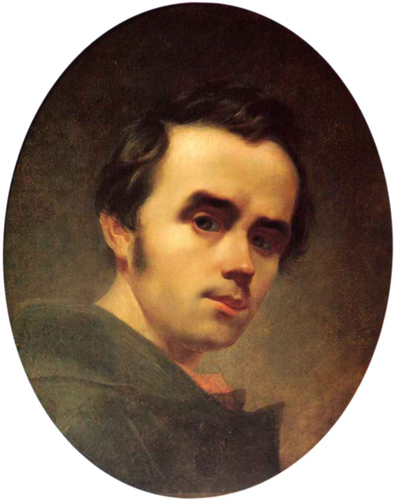
.jpg)
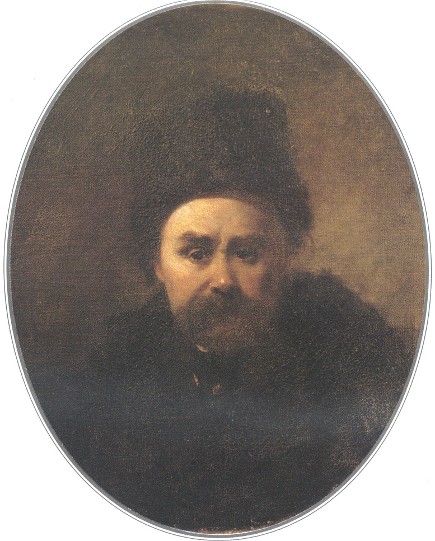
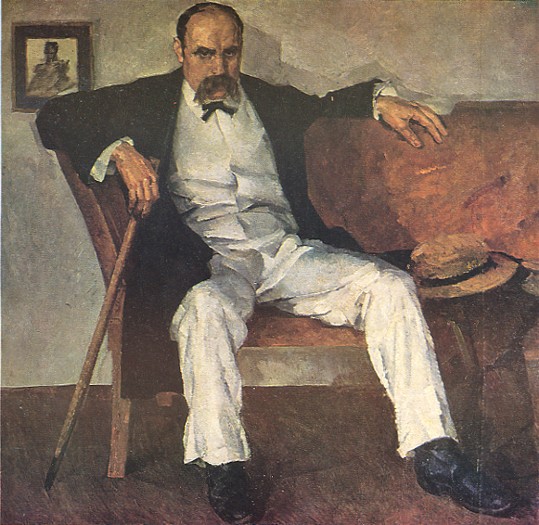
.jpg)
.jpg)
.jpg)
.jpg)
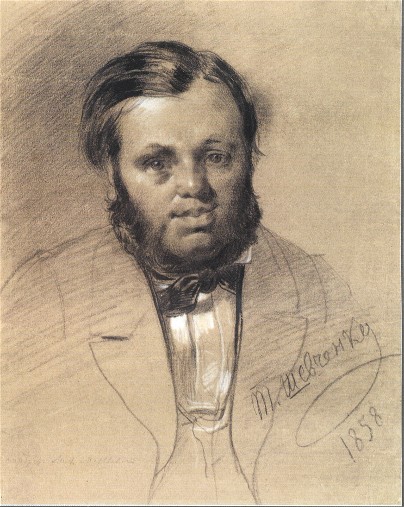
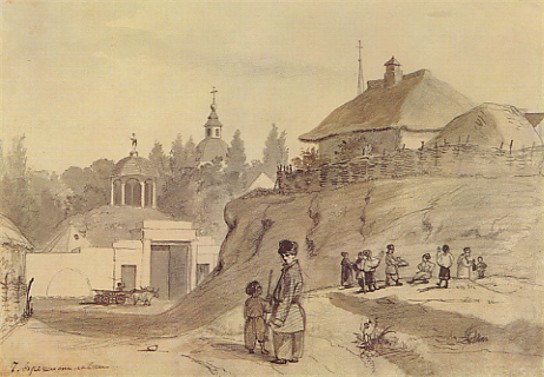
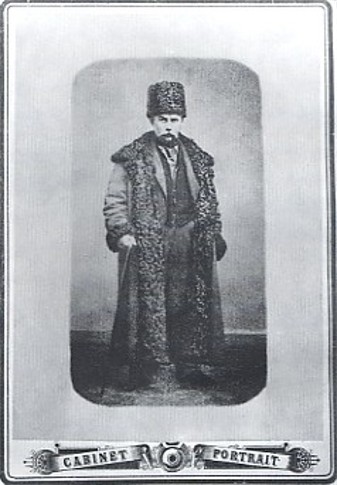
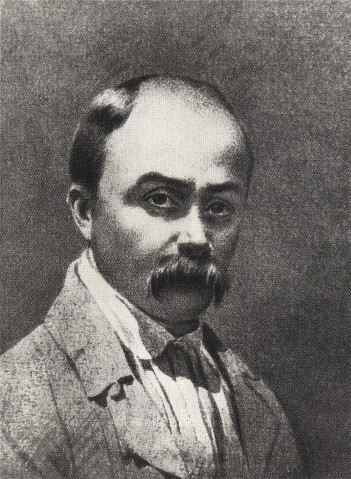
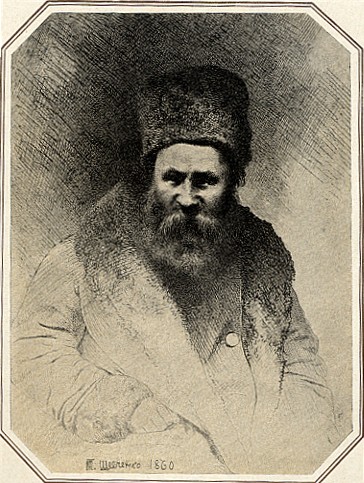
.jpg)
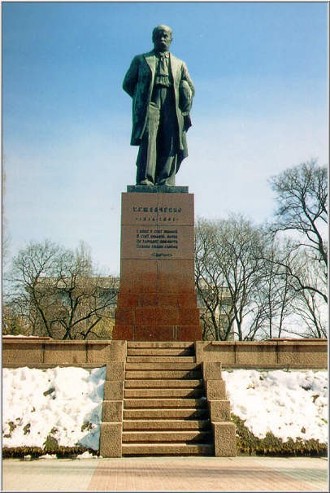
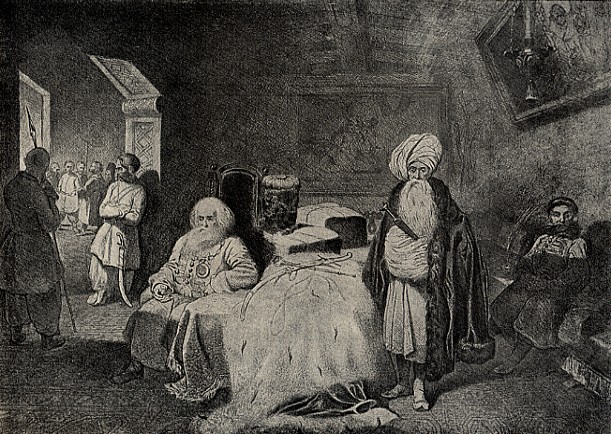
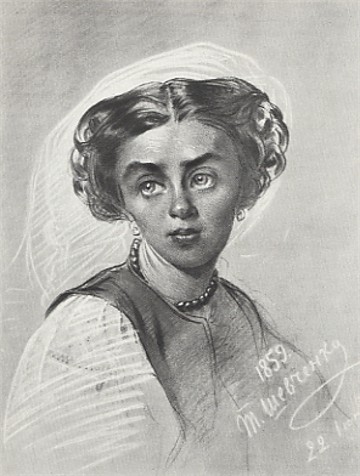

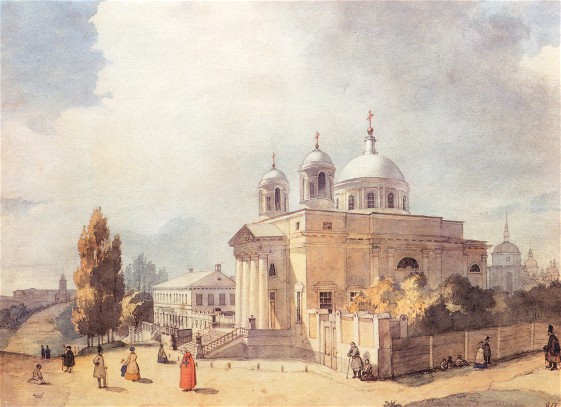
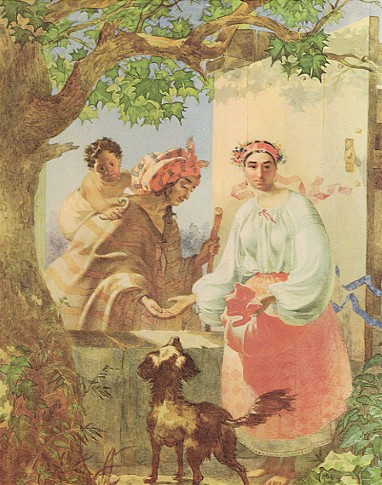
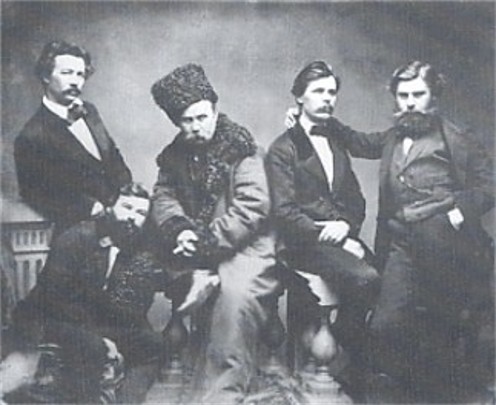
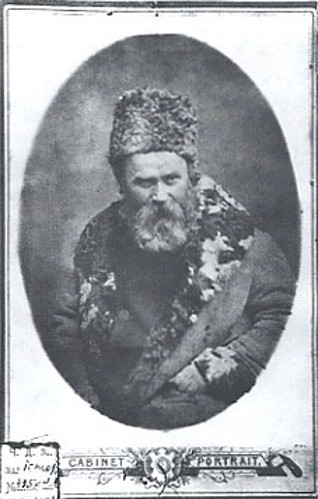
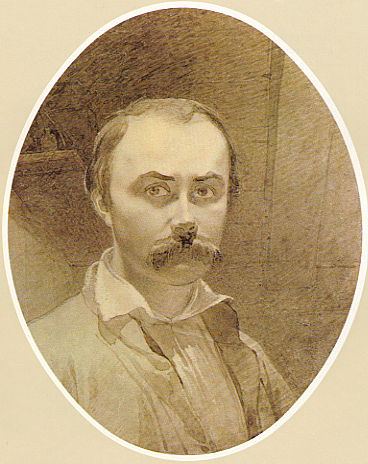
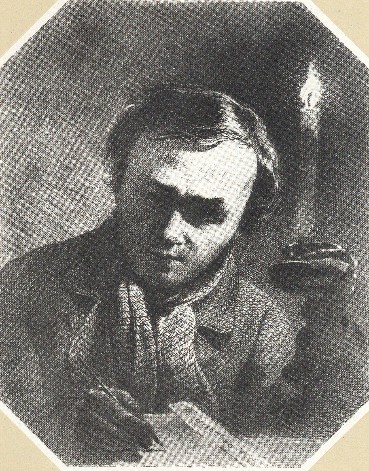
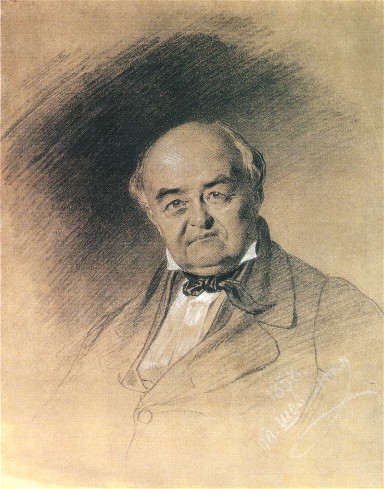
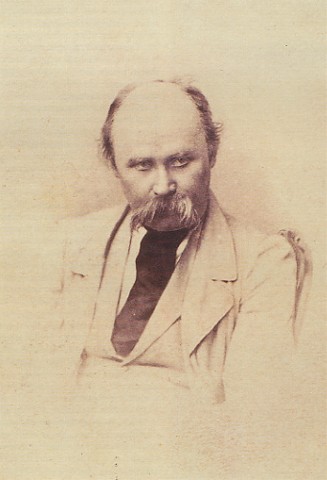
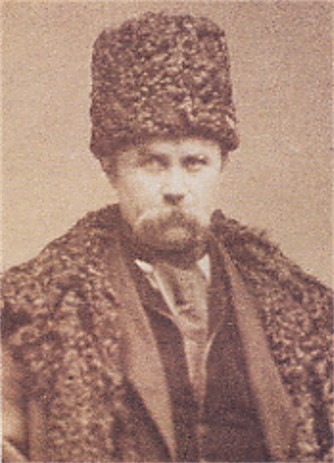
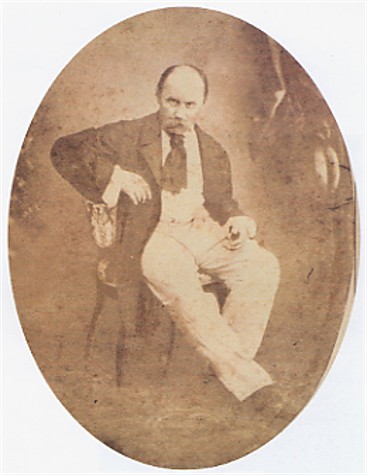
.jpg)
.jpg)
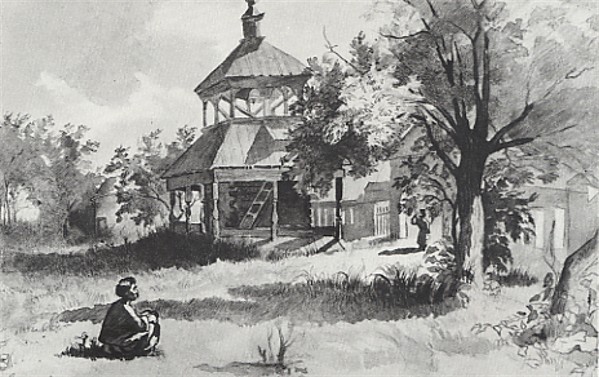
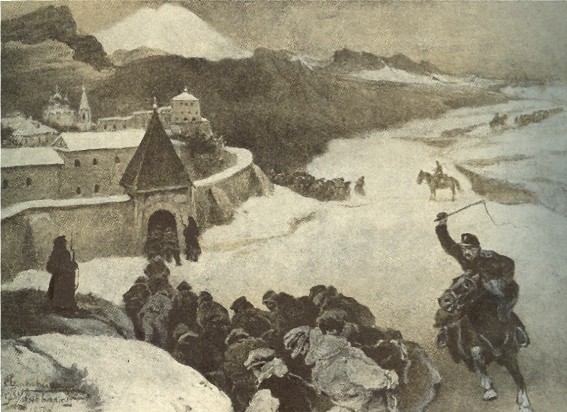
.jpg)
